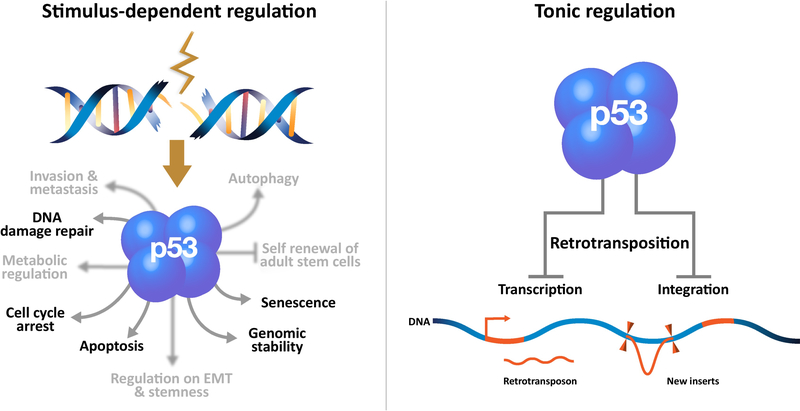Figure 1.
As a transcription factor p53 (four fused blue balls) governs numerous stress response programs. In the canonical view (left panel) signals provoked by genotoxic damage (brown jagged line) stimulate p53 binding and transactivation of targets that specify adaptive processes including apoptosis, cell cycle arrest, senescence, DNA repair and others not mentioned here (unfocused text) but comprehensively reviewed elsewhere [7, 56]. Recent studies indicate that cell cycle control, apoptosis and senescence do not adequately explain tumor suppression by p53 [8, 9]. The right panel illustrates that p53 tonically restrains mobile elements through activities that are not yet defined [24, 25]. Evidence outlined in this review suggests that, although historically understudied, transrepression by p53 is disease-relevant.

